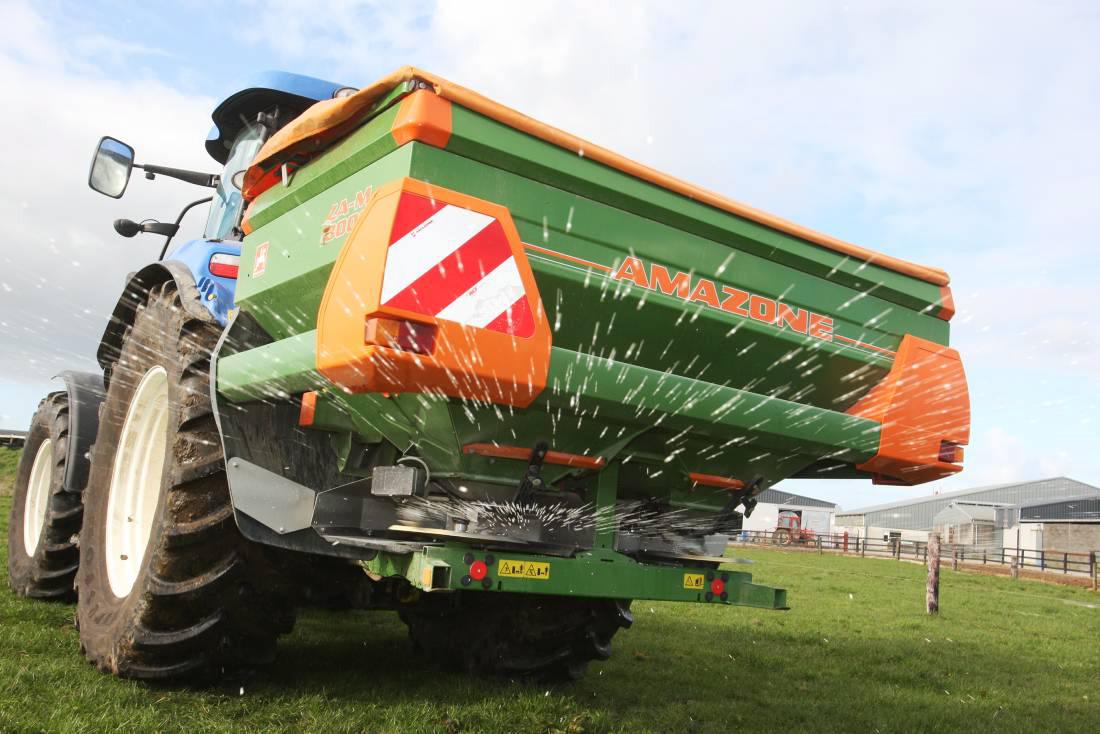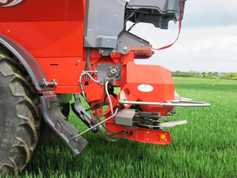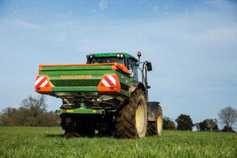Those who don’t agree with early nitrogen have more reason to shout louder this year because there is a lot more grass around after the mild winter. The “anti-early nitrogen brigade” cast doubt in the minds of those farmers who want to reduce costs and are looking at fields of green grass waving in the distance.
However, research has shown us year after year that when you apply nitrogen (either urea or CAN), it is not until four to six weeks later that you see the benefit in terms of grass growth. In other words, you are spreading now to improve grass growth in four to six weeks time – not this week. The response rate can be up to ten-to-one, so one kilogramme of nitrogen can deliver 10kg of grass dry matter.
To confuse the matter further, the anti-nitrogen lads will throw in the debate about whether CAN (27% N) or urea (46% N) is the product of choice at this time of the year. At discussion groups, you will hear farmers relate experience comparing urea and CAN on different paddocks in different years in paddocks with different soil fertility. Of course there will be differences if you’re not comparing like with like, but again, we need to look at the facts of the matter.
Nitrogen (N) response rates can only be fully realised if soil fertility and pH are optimum, swards are vigorous, and we add the right nutrient source at the right rate and time.
Depending on your deal, CAN will cost about 30% more per unit of nitrogen than urea. Over a large area this can amount to serious euros for a family farm.
Listen to a discussion on fertiliser prices in our podcast below:
Of course, it is not always practical to apply all fertiliser N as a straight N product. For instance, where phosphorus (P) and potassium (K) levels are sub-optimal, these nutrients may need to be applied in combination with N. Nevertheless, it is clear that there is a potential saving to be had if urea can be used as opposed to CAN.
CAN
When CAN is applied, 50% of the N content is in nitrate form and 50% is in ammonium form. Both forms are immediately available for uptake by grass. The ammonium portion is converted to nitrate by a two-step process mediated by soil bacteria and/or fungi. CAN application causes spikes in soil nitrate. Nitrate is good for grass growth but under wet conditions this nitrate, which a farmer pays for, is vulnerable to leaching and causes water quality problems and gas production – both represent wasted
money for the farmer.
Urea
Urea also provides nitrate and ammonium for the crop but is converted through ammonia to ammonium by picking up one hydrogen ion. It is during this conversion that N purchased as urea is vulnerable to volatilisation loss.
Once the ammonium has been formed, which may occur in hours or over a number of days, N from urea will be taken up by plants and/or converted to nitrate in the same way as ammonium bought in a bag as CAN.
Nitrogen from urea does have much higher volatilisation loss risk compared with N from CAN. However, N from urea can be less vulnerable to leaching which is more the challenge at this time of the year rather than sunshine hours.
Pat Forrestal and his colleagues at Johnstown Castle have been looking at the merits of different forms of nitrogen.
One of the more recent research findings is that in March and April urea can grow a lot more grass compared to CAN and this difference can be up to 400kg/ha better than CAN depending on the field.
They also found that at lower application rates (30kg N/ha), the yield from urea can be higher than CAN. The data used to determine this came from Teagasc trials.
On the environmental front, urea as a product will have less nitrous oxide emissions than CAN and emissions can be as much as 70% lower. At a recent conference, Pat concluded that urea costs less and offers the potential to sustain or increase national nitrogen usage with reduced nitrous oxide emissions.
While grass volumes are high on farms, spreading now will deliver grass in March and April.Ideally apply urea shortly before moderate rain (5 to 15mm) so that urea is washed into the soil. Too much rain means it will be washed off (run-off) so you don’t want that to happen.Apply in small split applications (30 kg/ha) so that less is lost.Urea is a better more efficient and cheaper product than CAN at this time of the year.
Those who don’t agree with early nitrogen have more reason to shout louder this year because there is a lot more grass around after the mild winter. The “anti-early nitrogen brigade” cast doubt in the minds of those farmers who want to reduce costs and are looking at fields of green grass waving in the distance.
However, research has shown us year after year that when you apply nitrogen (either urea or CAN), it is not until four to six weeks later that you see the benefit in terms of grass growth. In other words, you are spreading now to improve grass growth in four to six weeks time – not this week. The response rate can be up to ten-to-one, so one kilogramme of nitrogen can deliver 10kg of grass dry matter.
To confuse the matter further, the anti-nitrogen lads will throw in the debate about whether CAN (27% N) or urea (46% N) is the product of choice at this time of the year. At discussion groups, you will hear farmers relate experience comparing urea and CAN on different paddocks in different years in paddocks with different soil fertility. Of course there will be differences if you’re not comparing like with like, but again, we need to look at the facts of the matter.
Nitrogen (N) response rates can only be fully realised if soil fertility and pH are optimum, swards are vigorous, and we add the right nutrient source at the right rate and time.
Depending on your deal, CAN will cost about 30% more per unit of nitrogen than urea. Over a large area this can amount to serious euros for a family farm.
Listen to a discussion on fertiliser prices in our podcast below:
Of course, it is not always practical to apply all fertiliser N as a straight N product. For instance, where phosphorus (P) and potassium (K) levels are sub-optimal, these nutrients may need to be applied in combination with N. Nevertheless, it is clear that there is a potential saving to be had if urea can be used as opposed to CAN.
CAN
When CAN is applied, 50% of the N content is in nitrate form and 50% is in ammonium form. Both forms are immediately available for uptake by grass. The ammonium portion is converted to nitrate by a two-step process mediated by soil bacteria and/or fungi. CAN application causes spikes in soil nitrate. Nitrate is good for grass growth but under wet conditions this nitrate, which a farmer pays for, is vulnerable to leaching and causes water quality problems and gas production – both represent wasted
money for the farmer.
Urea
Urea also provides nitrate and ammonium for the crop but is converted through ammonia to ammonium by picking up one hydrogen ion. It is during this conversion that N purchased as urea is vulnerable to volatilisation loss.
Once the ammonium has been formed, which may occur in hours or over a number of days, N from urea will be taken up by plants and/or converted to nitrate in the same way as ammonium bought in a bag as CAN.
Nitrogen from urea does have much higher volatilisation loss risk compared with N from CAN. However, N from urea can be less vulnerable to leaching which is more the challenge at this time of the year rather than sunshine hours.
Pat Forrestal and his colleagues at Johnstown Castle have been looking at the merits of different forms of nitrogen.
One of the more recent research findings is that in March and April urea can grow a lot more grass compared to CAN and this difference can be up to 400kg/ha better than CAN depending on the field.
They also found that at lower application rates (30kg N/ha), the yield from urea can be higher than CAN. The data used to determine this came from Teagasc trials.
On the environmental front, urea as a product will have less nitrous oxide emissions than CAN and emissions can be as much as 70% lower. At a recent conference, Pat concluded that urea costs less and offers the potential to sustain or increase national nitrogen usage with reduced nitrous oxide emissions.
While grass volumes are high on farms, spreading now will deliver grass in March and April.Ideally apply urea shortly before moderate rain (5 to 15mm) so that urea is washed into the soil. Too much rain means it will be washed off (run-off) so you don’t want that to happen.Apply in small split applications (30 kg/ha) so that less is lost.Urea is a better more efficient and cheaper product than CAN at this time of the year. 





 This is a subscriber-only article
This is a subscriber-only article










SHARING OPTIONS: